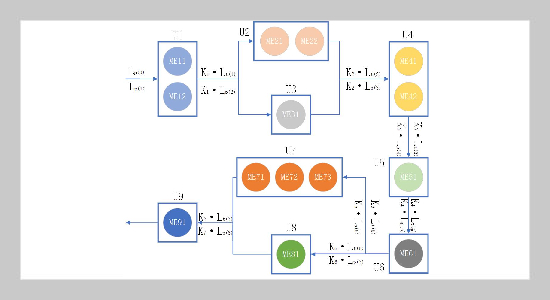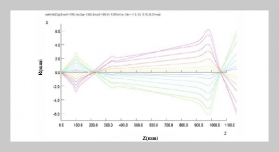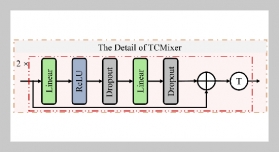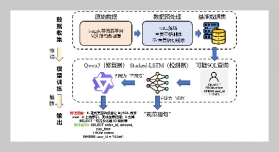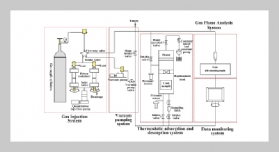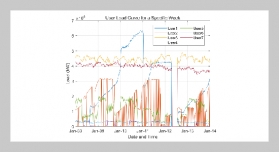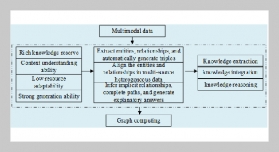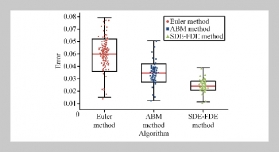- [1] Z. Tian, X. Jiang, W. Liu, and Z. Li, (2023) “Dynamic energy-efficient scheduling of multi-variety and small batch flexible job-shop: A case study for the aerospace industry" Computers & Industrial Engineering 178: 109111. DOI: 10.1016/j.cie.2023.109111.
- [2] S. Kolasani, (2024) “Revolutionizing manufacturing, making it more efficient, flexible, and intelligent with In�dustry 4.0 innovations" International Journal of Sus�tainable Development Through AI, ML and IoT 3(1): 1–17.
- [3] R. Wang, T. Xin, S. Jia, D. Ren, and M. Li, (2024) “Pro�duction line balance problem identification and improve�ment based on decision tree: A case study of commercial air conditioner production line" Science Progress 107(1): DOI: 10.1177/00368504241238612.
- [4] M. Kumbhar, A. H. Ng, and S. Bandaru, (2023) “A digital twin based framework for detection, diagnosis, and improvement of throughput bottlenecks" Journal of man�ufacturing systems 66: 92–106. DOI: 10.1016/j.jmsy.2022.11.016.
- [5] A. Skoogh, M. Thürer, M. Subramaniyan, A. Matta, and C. Roser, (2023) “Throughput bottleneck detection in manufacturing: a systematic review of the literature on methods and operationalization modes" Production & Manufacturing Research 11(1): 2283031. DOI: 10.1080/21693277.2023.2283031.
- [6] C. Latsou, M. Farsi, and J. A. Erkoyuncu, (2023) “Dig�ital twin-enabled automated anomaly detection and bot�tleneck identification in complex manufacturing systems using a multi-agent approach" Journal of Manufactur�ing Systems 67: 242–264. DOI: 10.1016/j.jmsy.2023.02.008.
- [7] L. Ragazzini, E. Negri, L. Fumagalli, and M. Macchi, (2024) “Digital Twin-based bottleneck prediction for im�proved production control" Computers & Industrial Engineering 192: 110231. DOI: 10.1016/j.cie.2024.110231.
- [8] W. Yan, J. Wang, S. Lu, M. Zhou, and X. Peng, (2023) “A review of real-time fault diagnosis methods for indus�trial smart manufacturing" Processes 11(2): 369. DOI: 10.3390/pr11020369.
- [9] P. A. Tuan and N. M. Linh, (2024) “Trajectory Tracking Control Of Omnidirectional Mobile Robots: A Model-Free Control-based Apprroach" Journal of Applied Science and Engineering 27(12): 3687–3696. DOI: 10.6180/jase.202412_27(12).0009.
- [10] Y. Pan and L. Zhang, (2021) “Automated process dis�covery from event logs in BIM construction projects" Automation in Construction 127: 103713. DOI: 10.1016/j.autcon.2021.103713.
- [11] M. Subramaniyan, A. Skoogh, H. Salomonsson, P. Bangalore, and J. Bokrantz, (2018) “A data-driven al�gorithm to predict throughput bottlenecks in a production system based on active periods of the machines" Com�puters & Industrial Engineering 125: 533–544. DOI: 10.1016/j.cie.2018.04.024.
- [12] T. A. Do, Q. N. Le, Q. D. Nguyen, and P. Vu, (2024) “A PQ Control Strategy Using Feedback Linearization Theory For A Three-phase Four-wire Grid-Connected In�verter In An AC Battery" Journal of Applied Science and Engineering 28(4): 893–900. DOI: 10.6180/jase.202504_28(4).0019.
- [13] F. K. A. Alazemi, M. K. A. B. M. Ariffin, F. B. Mustapha, and E. E. B. Supeni, (2022) “A new fuzzy TOPSIS-based machine learning framework for minimiz�ing completion time in supply chains" International Journal of Fuzzy Systems 24(3): 1669–1695. DOI: 10. 1007/s40815-021-01226-3.
- [14] X. Zhang and L. Pei, (2024) “Cooling Load Forecasting Based On Hybrid Machine-Learning Application With Integration Of Meta-heuristic Algorithm" Journal of Applied Science and Engineering 28(3): 601–614. DOI: 10.6180/jase.202503_28(3).0016.
- [15] P. Dobra and J. Jósvai, (2022) “Assembly line overall equipment effectiveness (OEE) prediction from human estimation to supervised machine learning" Journal of Manufacturing and Materials Processing 6(3): 59. DOI: 10.3390/jmmp6030059.
- [16] P. Agarwal, M. Aghaee, M. Tamer, and H. Budman, (2022) “A novel unsupervised approach for batch pro�cess monitoring using deep learning" Computers & Chemical Engineering 159: 107694. DOI: 10.1016/j.compchemeng.2022.107694.
- [17] L. Teng and Y. Qiao, (2022) “BiSeNet-oriented context attention model for image semantic segmentation" Com�puter Science and Information Systems 19(3): 1409–1426. DOI: 10.2298/csis220321040t.
- [18] C. Li, T. Yu, H.-t. Fan, G. Xiao, J. Arinez, and Q. Chang, (2023) “Dynamic bottleneck identification and production loss evaluation for assembly lines" Manufac�turing Letters 35: 1089–1096. DOI: 10.1016/j.mfglet.2023.08.089.
- [19] S. F. Ahmed, M. S. B. Alam, M. Hassan, M. R. Rozbu, T. Ishtiak, N. Rafa, M. Mofijur, A. Shawkat Ali, and A. H. Gandomi, (2023) “Deep learning modelling techniques: current progress, applications, advantages, and challenges" Artificial Intelligence Review 56(11): 13521–13617. DOI: 10.1007/s10462-023-10466-8.
- [20] Z. Zhang and J. Li, (2023) “A review of artificial intelli�gence in embedded systems" Micromachines 14(5): 897. DOI: 10.3390/mi14050897.
- [21] S. Lin, J. Liu, and S. Li. “Production bottleneck pre�diction of multi-variety and small batch production workshop”. In: Journal of Physics: Conference Series. 2187. 1. IOP Publishing. 2022, 012057. DOI: 10.1088/1742-6596/2187/1/012057.
- [22] M. Del Giudice, (2024) “The prediction-explanation fal�lacy: a pervasive problem in scientific applications of ma�chine learning" Methodology 20(1): 22–46. DOI: 10.5964/meth.11235.
- [23] J. Hoxha, M. Y. Çodur, E. Mustafaraj, H. Kanj, and A. El Masri, (2023) “Prediction of transportation energy de�mand in Türkiye using stacking ensemble models: Method�ology and comparative analysis" Applied Energy 350: 121765. DOI: 10.1016/j.apenergy.2023.121765.
- [24] W. Su, F. Jiang, C. Shi, D. Wu, L. Liu, S. Li, Y. Yuan, and J. Shi, (2023) “An XGBoost-based knowledge trac�ing model" International Journal of Computational Intelligence Systems 16(1): 13. DOI: 10.1007/s44196-023-00192-y.
- [25] E. Chung, K. Park, and P. Kang, (2023) “Fault classifi�cation and timing prediction based on shipment inspection data and maintenance reports for semiconductor manufac�turing equipment" Computers & Industrial Engineer�ing 176: 108972. DOI: 10.1016/j.cie.2022.108972.
- [26] G. James, D. Witten, T. Hastie, R. Tibshirani, and J. Taylor. “Linear regression”. In: An introduction to sta�tistical learning: With applications in python. Springer, 2023, 69–134. DOI: 10.1007/978-3-031-38747-0_3.
- [27] M. Thürer, S. S. Li, C. Yang, T. Qu, and G. Q. Huang. “Does Regulating Work-In-Process Increase Through�put and Reduce Cycle Times? An Assessment by Lab Scale System Models”. In: IFIP International Confer�ence on Advances in Production Management Systems. Springer. 2023, 649–661. DOI: 10.1007/978- 3-031-43670-3_45.
- [28] Y. Zhou, Y. Wang, and Z. Ji, (2023) “Bottleneck Drift Fluctuation Analysis of Discrete Remanufacturing Sys�tem under Disturbance" Journal of System Simula�tion 35(4): 809–821. DOI: 10.16182/j.issn1004731x.joss.21-1335.
- [29] X. Lai, T. Qiu, H. Shui, D. Ding, and J. Ni, (2023) “Pre�dicting future production system bottlenecks with a graph neural network approach" Journal of Manufacturing Systems 67: 201–212. DOI: 10.1016/j.jmsy.2023.01.010.
- [30] S. Wang, Y. Wu, R. Li, and X. Wang, (2023) “Remote sensing-based retrieval of soil moisture content using stacking ensemble learning models" Land Degradation & Development 34(3): 911–925. DOI: 10.1002/ldr.4505.


